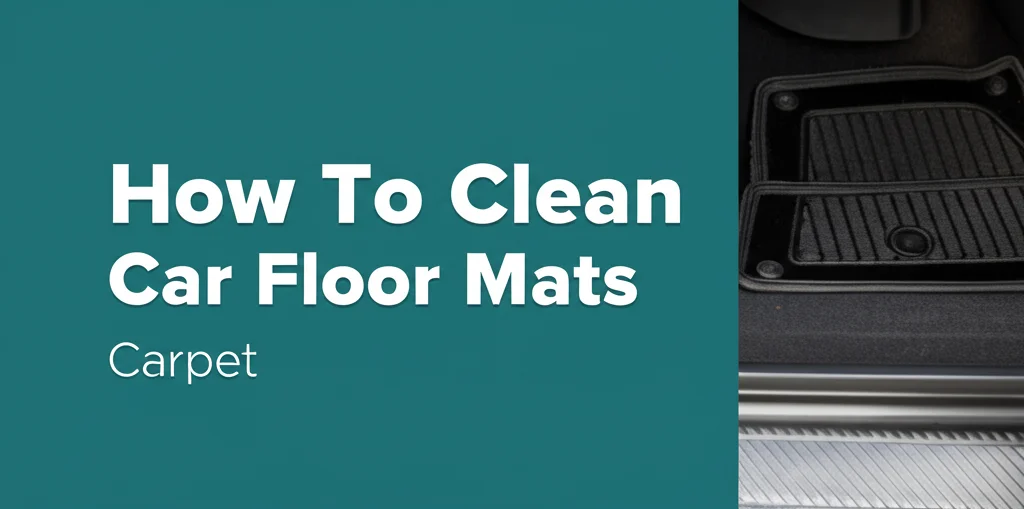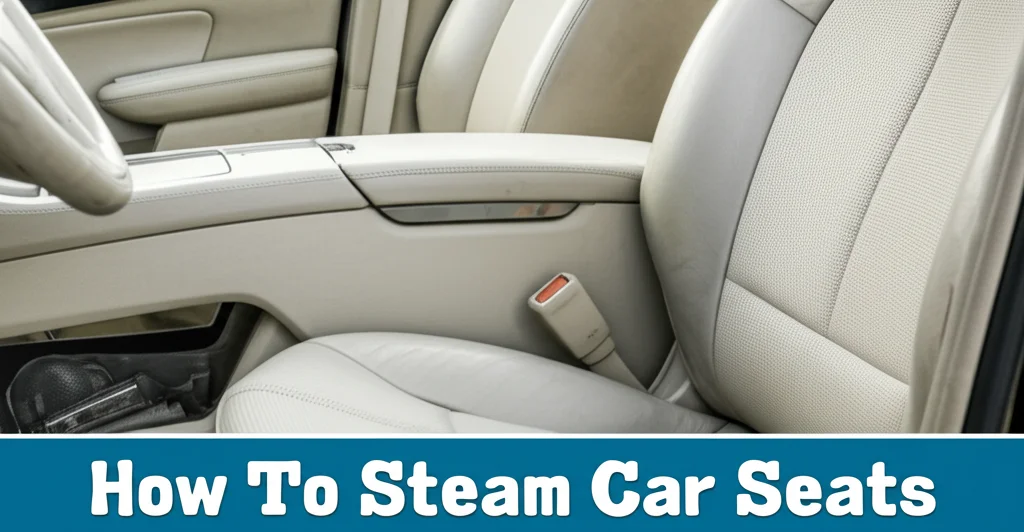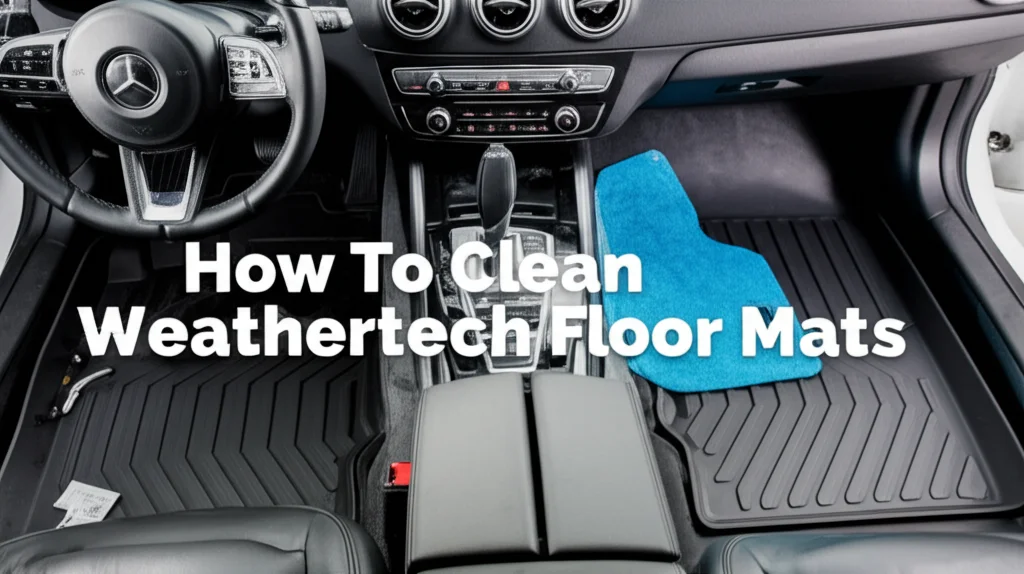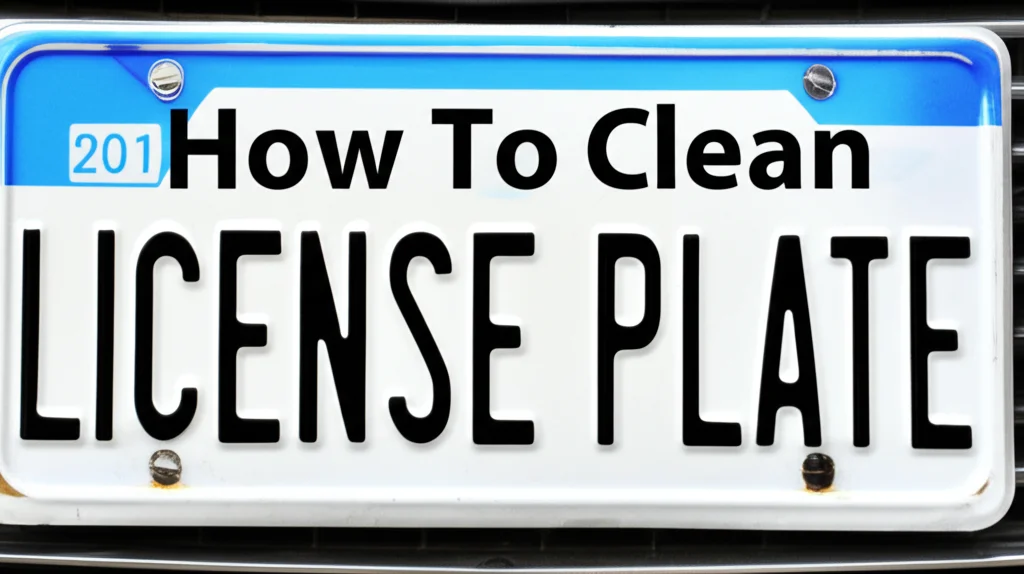· Auto Detailing · 15 min read
How To Clean All Weather Floor Mats
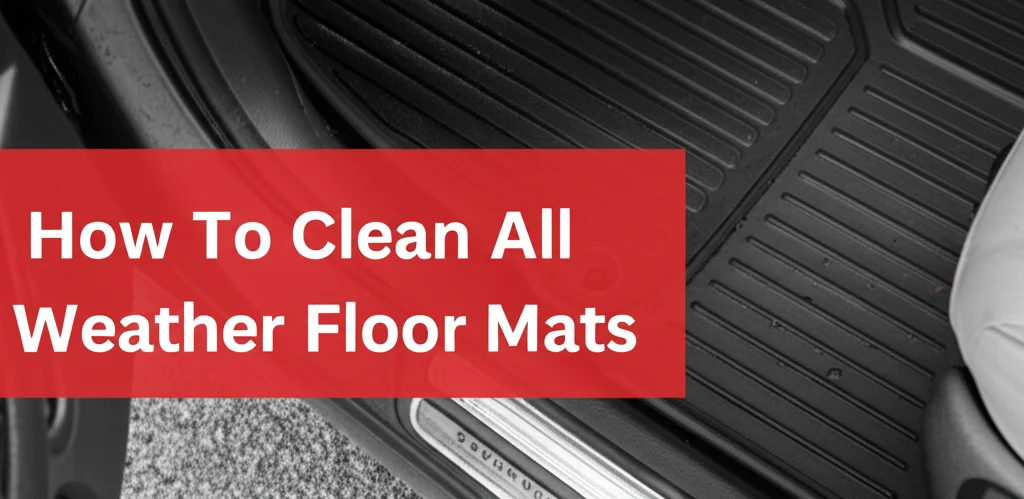
All-weather floor mats are essential for protecting your vehicle’s interior from dirt, mud, snow, and spills. I’ve found that these durable mats can handle almost anything Mother Nature throws at them, but they still need regular cleaning to work effectively.
In this guide, I’ll share my proven methods for cleaning all-weather floor mats to keep them looking great and functioning properly. Whether you have rubber, vinyl, or thermoplastic mats, these cleaning techniques will help extend their lifespan and maintain your car’s interior value.
Takeaway
- Remove mats from your vehicle before cleaning to prevent moisture damage
- Use mild soap and water for routine cleaning of all-weather mats
- For stubborn dirt, use a soft brush and appropriate cleaners for your mat material
- Thoroughly dry mats before reinstalling in your vehicle
- Clean mats regularly to prevent buildup of dirt and grime
Quick Answer: To clean all-weather floor mats, remove them from your vehicle, shake off loose debris, scrub with mild soap and water using a soft brush, rinse thoroughly, and allow to completely dry before reinstalling. For tougher cleaning, use cleaners appropriate for your specific mat material (rubber, vinyl, or thermoplastic).
Understanding Different Types of All-Weather Floor Mats
All-weather floor mats come in several materials, each requiring slightly different cleaning approaches. Understanding what your mats are made of helps determine the best cleaning method.
Rubber mats are perhaps the most common type of all-weather floor mats. Made from natural or synthetic rubber, these mats are exceptionally durable and water-resistant. They typically feature ridges or grooves designed to trap water, mud, and debris. Rubber mats are flexible, making them easy to remove and shake out, but they can degrade if exposed to certain harsh chemicals or petroleum-based products.
Thermoplastic mats have grown increasingly popular in recent years. These rigid plastic mats are precisely measured to fit specific vehicle models. Their high sidewalls and custom fit make them excellent at containing spills and debris. Thermoplastic mats are typically more stain-resistant than rubber but can crack if cleaned with inappropriate chemicals.
Vinyl mats represent a middle ground between rubber and thermoplastic options. They offer good flexibility while maintaining shape and are often less expensive than other types. However, vinyl can become brittle over time, especially when exposed to extreme temperature fluctuations or harsh cleaning agents.
Many premium all-weather mats feature multi-layer construction, combining different materials for enhanced performance. These might include a rigid core for stability, a soft upper layer for comfort, and specialized textured surfaces for trapping debris.
Understanding your specific mat type helps you choose appropriate cleaning methods that effectively remove dirt without causing damage. Most all-weather mats have cleaning instructions from the manufacturer, which should be your first reference point when developing a cleaning routine.
Essential Supplies for Cleaning All-Weather Floor Mats
Having the right supplies makes cleaning your all-weather floor mats much easier and more effective. I’ve found these items to be essential for proper mat maintenance.
Basic Cleaning Supplies
For routine cleaning, gather these supplies:
- Garden hose or pressure washer: For thorough rinsing
- Bucket: Large enough to hold soapy water for cleaning
- Mild dish soap or car wash soap: Gentle yet effective for removing grime
- Soft-bristled brush: Firm enough to clean grooves without damaging materials
- Microfiber cloths: For drying and buffing
- Large towels: To speed up the drying process
- Vacuum with attachments: For removing dry debris before wet cleaning
Specialized Cleaning Products
For deeper cleaning and material-specific care:
- Rubber cleaner/conditioner: For rubber mats to prevent cracking and drying
- Vinyl protectant: Helps vinyl mats resist UV damage and prevents fading
- All-purpose interior cleaner: Safe for most mat materials when diluted properly
- Silicone spray: Can restore shine to thermoplastic mats
What to Avoid
Certain products can damage your floor mats:
- Bleach or ammonia-based cleaners: These can break down rubber and vinyl
- Petroleum-based solvents: Can cause rubber to swell or deteriorate
- Stiff wire brushes: Will scratch and damage mat surfaces
- Armor All or heavy silicone products: May make mats dangerously slippery
- Oil-based cleaners: Can leave residue that attracts more dirt
For stubborn stains, specialized products like baking soda paste or Simple Green cleaner work well on most all-weather mats without causing damage. Always test any new cleaning product on a small, inconspicuous area first to ensure compatibility with your specific mat material.
When shopping for cleaners, look for products specifically formulated for automotive rubber and plastic components. These are generally safe for most all-weather floor mats and won’t leave behind residues that can make surfaces slippery or attract more dirt.
Step-by-Step Cleaning Process for All-Weather Mats
Following a systematic approach ensures your all-weather floor mats get thoroughly clean without damage. I’ve refined this process over years of trial and error to be both effective and efficient.
Preliminary Steps
Remove mats from your vehicle: Never clean floor mats while they’re still in your car. Removing them prevents moisture damage to your vehicle’s actual flooring.
Shake off loose debris: Hold each mat vertically and give it several firm shakes to dislodge loose dirt, rocks, and debris. This simple step makes the wet cleaning process much more effective.
Vacuum thoroughly: Use a vacuum with a brush attachment to remove embedded dirt, especially from textured surfaces and deep grooves. Pay special attention to edges and corners where debris accumulates.
Basic Cleaning Method
Prepare your cleaning solution: Fill a bucket with warm water and add a small amount of mild dish soap or car wash soap. Avoid creating excessive suds, as these can be difficult to rinse away completely.
Pre-rinse the mats: Use a garden hose to wet the mats thoroughly, helping to loosen caked-on dirt and prepare the surface for cleaning.
Scrub with soapy water: Dip your soft-bristled brush into the soapy water and scrub the mats in a circular motion. Work in small sections, paying special attention to heavily soiled areas. For textured mats, ensure you’re getting into all the grooves and channels.
Rinse thoroughly: After scrubbing the entire mat, rinse it completely with clean water. Any soap residue left behind will attract dirt faster, so be thorough with this step.
Inspect and repeat if necessary: Check for any remaining stains or dirt. If needed, repeat the scrubbing process on those areas.
Drying Process
Shake off excess water: Give the mats several good shakes to remove as much water as possible.
Towel dry: Use large towels to absorb most of the remaining moisture. Press firmly rather than wiping to maximize water absorption.
Complete air drying: Hang the mats over a fence, clothesline, or lay them on a clean, dry surface in direct sunlight. Ensure they’re completely dry before reinstalling them in your vehicle to prevent mold and mildew growth.
Optional finishing touch: For rubber mats, apply a thin coat of rubber protectant once they’re completely dry. For vinyl or thermoplastic mats, a specialized protectant can restore shine and provide UV protection.
This basic cleaning process should be performed at least monthly for daily-use vehicles, or more frequently during winter months when salt and road grime accumulate more quickly.
Dealing with Stubborn Stains and Special Situations
Even the toughest all-weather floor mats can develop stubborn stains that resist normal cleaning. I’ve encountered many challenging cleaning situations and developed effective solutions for each type of problem.
Removing Common Stains
Road Salt and Winter Grime:
- Create a solution of equal parts white vinegar and warm water
- Apply to salt-stained areas and let sit for 5 minutes
- Scrub with a soft brush, then rinse thoroughly
- Neutralize any remaining vinegar with a mild soap solution
Mud and Clay Stains:
- Allow mud to dry completely
- Vacuum or brush off as much dried mud as possible
- Create a paste of baking soda and water
- Work the paste into the stain with a brush
- Let sit for 30 minutes before rinsing
Oil and Grease:
- Sprinkle corn starch or baby powder on fresh oil stains to absorb excess
- For set-in stains, apply a degreaser safe for your mat material
- Work in with a brush, let sit according to product instructions
- Rinse thoroughly and follow with regular soap cleaning
Coffee, Soda, and Food Stains:
- Mix one tablespoon of dish soap with two cups of cool water
- Add one tablespoon of white vinegar
- Apply to the stain with a soft cloth, working from the outside in
- Rinse thoroughly and dry
Material-Specific Challenges
Rubber Mat Whitening: Sometimes rubber mats develop a white, chalky appearance. This is often “blooming,” a natural process where compounds in the rubber rise to the surface.
- Clean normally with soap and water
- Apply a rubber conditioner or 303 Aerospace Protectant
- Buff with a microfiber cloth
Thermoplastic Mat Scratches:
- Clean thoroughly with soap and water
- Apply a plastic polish like Meguiar’s PlastX
- Buff gently with a soft cloth
- Finish with a plastic protectant
Vinyl Mat Restoration: For vinyl mats that have faded or begun to dry out:
- Clean thoroughly
- Apply a vinyl cleaner/conditioner
- Let it penetrate according to package directions
- Wipe away excess and allow to dry completely
Seasonal Cleaning Considerations
Winter Cleaning: During winter months, mats should be cleaned more frequently due to salt and road chemicals.
- Remove and clean mats weekly
- Pay special attention to salt residue, which can dry and damage materials
- Apply protectant more frequently to combat the drying effects of heating systems
Summer Cleaning: UV exposure can degrade mat materials over time.
- Clean off sunscreen spills immediately as they can stain
- Apply UV protectant to prevent fading and material breakdown
- Clean sand and beach debris promptly as it can be abrasive
For particularly challenging stains or damage, don’t hesitate to use products specifically designed for automotive rubber and plastic. Products like Chemical Guys Mat Renew or Mothers Floor Mat Cleaner are formulated to tackle tough stains while being gentle on mat materials.
Preventative Maintenance and Long-Term Care
Regular maintenance extends the life of your all-weather floor mats and keeps them looking their best. I’ve found that adopting these preventative practices saves time and money in the long run.
Regular Cleaning Schedule
Establish a consistent cleaning routine based on your driving conditions:
- Weekly: Shake out mats and vacuum thoroughly
- Monthly: Complete wash with soap and water
- Seasonally: Deep clean and apply appropriate protectants
- As needed: Address spills and stains immediately
This scheduled approach prevents buildup that becomes difficult to remove later. I keep a small hand vacuum in my garage specifically for quick mat cleanings between deeper washing sessions.
Protecting Your Mats Between Cleanings
Several practices help minimize damage and keep mats cleaner longer:
- Use entry brushes: Keep a shoe brush near vehicle entries to remove excess mud and debris before it reaches your mats
- Consider mat layering: Place inexpensive disposable paper mats on top of your all-weather mats during extremely muddy or snowy conditions
- Remove excessive buildup promptly: Don’t wait for your regular cleaning day if mats become heavily soiled
- Adjust floor vents: In winter, direct heating vents away from rubber mats to prevent premature drying and cracking
Proper Storage When Not in Use
If you switch between seasonal mats or need to store your all-weather mats temporarily:
- Clean and dry them completely
- Apply appropriate protectant for your mat material
- Store flat or rolled loosely (never folded, which can create permanent creases)
- Keep in a cool, dry place away from direct sunlight
- Place a sheet of parchment paper between stacked mats to prevent sticking
Inspecting for Damage
Regularly inspect your mats for signs of wear that might require attention:
- Cracks or tears: Small damages can often be repaired with specific rubber/vinyl repair kits
- Warping: Lay warped mats flat in the sun to help them regain their shape
- Brittle areas: Apply conditioner to rubber or vinyl mats showing signs of drying out
- Fading: Use UV protectants to slow color degradation
By addressing minor issues early, you can often extend mat life significantly. Many premium all-weather mat manufacturers like WeatherTech and Husky offer warranties, so keep your receipt and warranty information accessible if you notice premature deterioration.
Remember that even the most durable all-weather mats will eventually wear out. With proper care, however, quality mats should last 3-5 years of regular use, with many premium brands lasting considerably longer.
Professional Cleaning Options and When to Replace Mats
While regular home maintenance keeps all-weather floor mats in good condition, sometimes professional cleaning or replacement becomes necessary. I’ve learned to recognize when DIY cleaning isn’t enough.
Professional Cleaning Services
Several professional options exist for deep cleaning all-weather mats:
- Auto detailers: Many professional detailers have specialized equipment for deep cleaning rubber and vinyl products
- Power washing services: Commercial power washers can remove stubborn grime from textured surfaces
- Carpet cleaning companies: Some offer floor mat cleaning services using extraction methods
Professional cleaning typically costs $10-30 per set of mats and might be worth considering:
- After extreme soiling events (flooding, major spills)
- When home cleaning efforts no longer restore mats to acceptable condition
- For annual deep cleaning to extend mat life
- When dealing with biohazard situations (pet accidents, bodily fluids)
DIY Deep Cleaning Alternatives
Before trying professional services, consider these intensive DIY approaches:
- Pressure washer cleaning: If you have access to a pressure washer, use it on a medium setting (never high, which can damage mats)
- Dishwasher method: Some rubber mats can be cleaned in a dishwasher (no heat dry) on the top rack (check manufacturer guidelines first)
- Bathtub soaking: For extremely dirty mats, soaking overnight in a bathtub with OxiClean or similar oxygen cleaners can break down tough grime
Signs It’s Time to Replace Your Mats
Even the highest quality all-weather floor mats eventually reach the end of their useful life. Look for these indicators:
- Structural damage: Cracks, tears, or holes that compromise the mat’s ability to contain spills
- Permanent deformation: Warping or curling that won’t flatten even after conditioning
- Hardening of material: When rubber or vinyl becomes brittle and inflexible
- Persistent odor: Smells that remain after thorough cleaning may indicate bacterial growth within material pores
- Excessive wear in gripping mechanisms: When the mats no longer stay securely in place
- Fading or discoloration: Severe color changes that affect appearance
Cost-Benefit Analysis
When deciding between professional cleaning and replacement:
- Quality all-weather floor mats typically cost $50-200 per set
- Professional cleaning ranges from $10-30 per set
- If mats are structurally sound but dirty, cleaning is more economical
- If mats show significant wear after 3-5 years, replacement often makes more sense than investing in professional cleaning
Many vehicle owners find that replacing mats every 3-5 years, depending on use conditions, provides the best protection for their vehicle’s factory flooring. Consider upgrading to higher quality mats when replacing, as the investment in premium brands often pays off in longer service life and better protection.
Remember that your vehicle’s floor mats are a small investment compared to the cost of replacing damaged carpet or flooring in your vehicle. When in doubt about whether to clean or replace, compare the current condition to new mats and consider how well they’re still performing their protective function.
FAQs About Cleaning All-Weather Floor Mats
Over the years, I’ve been asked many questions about caring for all-weather floor mats. Here are answers to the most common inquiries.
Can I use bleach to clean my all-weather floor mats?
No, bleach should never be used on all-weather floor mats. Bleach breaks down rubber compounds and can cause discoloration, brittleness, and premature cracking. Instead, use mild soap and water for routine cleaning, and specialized rubber or vinyl cleaners for deeper cleaning needs.
How often should I clean my all-weather floor mats?
All-weather floor mats should be thoroughly cleaned monthly under normal conditions, with quick cleanings (shaking out and vacuuming) performed weekly. During winter months or muddy seasons, increase cleaning frequency. Always address spills and stains immediately rather than waiting for routine cleaning.
Why do my rubber mats have a white film after cleaning?
The white film on rubber mats is typically “blooming,” where compounds in the rubber rise to the surface. This is normal and not harmful. Clean the mats with soap and water, then apply a rubber conditioner or protectant designed for automotive use. Buff with a microfiber cloth to restore the finish.
Can I put my all-weather floor mats in the washing machine?
Most all-weather floor mats should not be cleaned in washing machines. The agitation can damage or deform them. However, some fabric-topped all-weather mats (hybrid types) might be machine washable according to manufacturer specifications. Always check your specific mat’s care instructions before attempting machine washing.
What’s the best way to dry all-weather floor mats quickly?
For fastest drying, first shake off excess water, then absorb remaining moisture with towels by pressing firmly (not wiping). Place mats in direct sunlight if possible, or use fans to circulate air around them. Never reinstall damp mats in your vehicle, as trapped moisture can cause mold growth and unpleasant odors.
Can I use armor all or tire shine products on my rubber floor mats?
Avoid using tire shine or heavy silicone products like Armor All on floor mats. These products make surfaces slippery, which can be dangerous as mats may slide under pedals while driving. Instead, use products specifically designed for floor mats that offer protection without excessive slickness.
Conclusion: Maintaining Your Vehicle’s First Line of Defense
All-weather floor mats represent an important investment in protecting your vehicle’s interior from damage. With proper care and regular maintenance, these durable mats can provide years of effective service. I’ve found that the small amount of time spent on regular cleaning pays dividends in extended mat life and preserved vehicle value.
The key to success lies in consistent cleaning before dirt becomes embedded, prompt attention to spills and stains, and using cleaning products appropriate for your specific mat material. Remember that even the most durable all-weather mats benefit from gentle cleaning techniques and proper drying procedures.
By following the guidelines in this article, you’ll extend the life of your floor mats while ensuring they continue to effectively protect your vehicle’s carpeting from damage. The few minutes spent shaking out and occasionally washing your mats can save hundreds of dollars in potential carpet replacement costs.
Whether you have basic rubber mats or premium custom-fit all-weather floor liners, proper maintenance keeps them looking good and functioning well. For more helpful cleaning guides for your vehicle and home, explore our related articles on cleaning vinyl flooring and removing stubborn stains.
- car floor mats
- all weather mats
- car cleaning
- auto detailing
- floor mat cleaning

